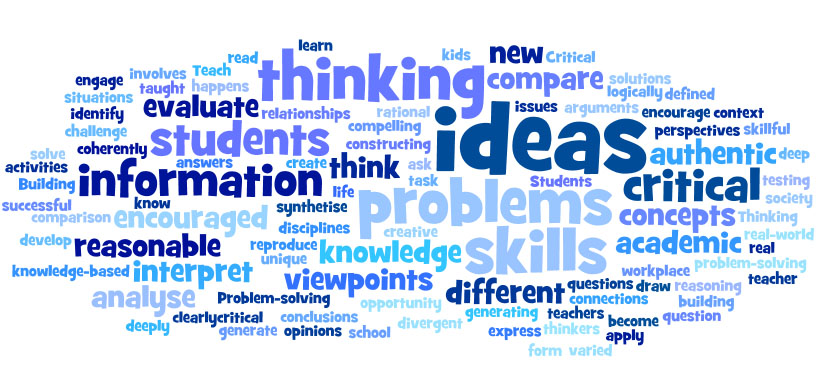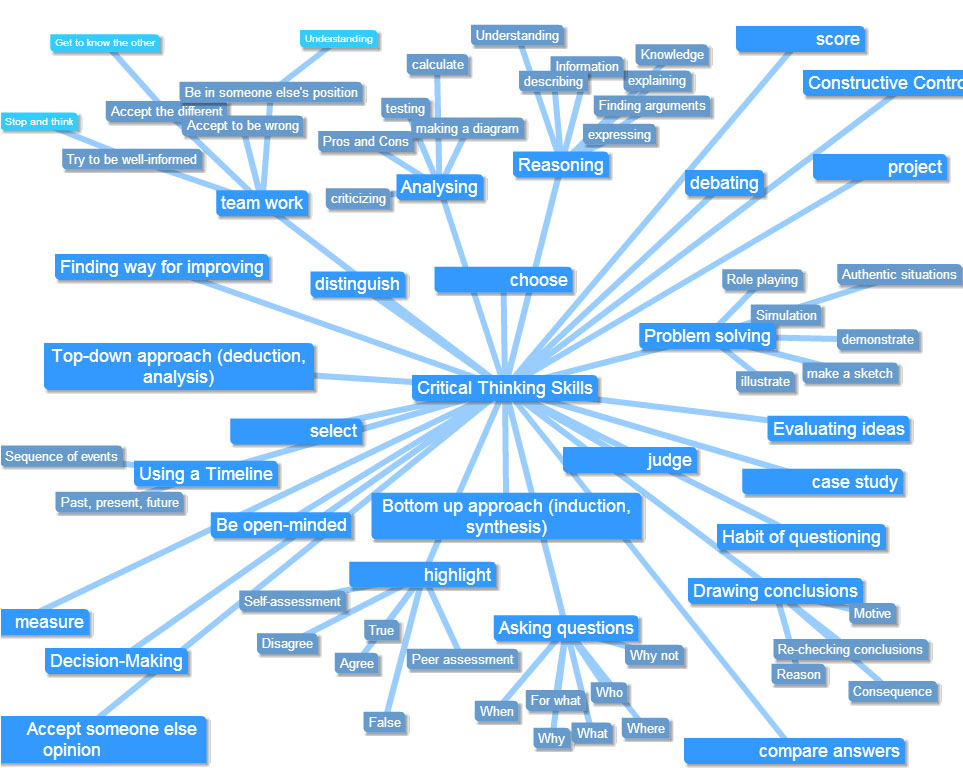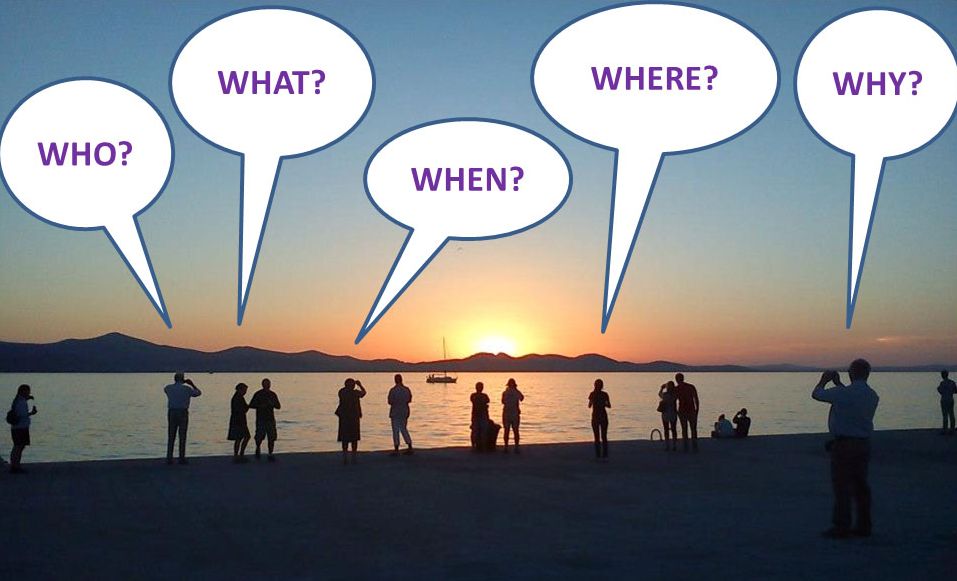SOME THINKING ABOUT CRITICAL THINKING
— Arjana Blazic
“What kids know is just not important in comparison with whether they can think“. Nicholas Negroponte
How can we develop critical thinking skills with our students? Many school activities require students to learn and reproduce information they are given by their teachers. They are not asked to interpret and compare varied ideas, they are not required to analyze or synthetize unique concepts, nor are they encouraged to evaluate information or viewpoints and identify reasonable ideas – or in other words – they are not constructing new, deep knowledge.
Activities that require knowledge building ask students to interpret, analyze, synthesize and evaluate information or ideas, form rational viewpoints and draw reasonable conclusions. It is important that teachers encourage their students to make connections between ideas as well as between different academic disciplines and to compare and analyze different perspectives and opinions. Students should be able to express their own arguments clearly and support them with valid reasoning or evidence. If we want our students to become critical thinkers, we must encourage them to ask questions, to think logically and coherently and to come up with compelling answers.
Many teachers believe that project-based learning is the best way to develop critical thinking and problem solving skills. A project that aims at engaging students in critical thinking and problem solving should be scaffolded and well-structured so that students clearly understand what their task is. However, they should choose by themselves how they will complete it. Such a project will lead to the creation of an enjoyable learning environment where students don’t have a feeling that they are learning, but where the actual learning really takes place. If students are actively engaged in their learning activities and find these activities to be meaningful with a tangible outcome, their attitude to learning will undoubtedly change for the better. Active engagement means that students become interested and motivated, which leads to taking ownership of the task and responsibility for their learning. This means that learning becomes fun.
Webquests are great for creating an engaging learner-centered environment. They provide scaffolding for students and they are motivating and rewarding at the same time. In order to develop a webquest, teachers must have an exact plan on what the learning goals are, what is expected of students, what the final product will be and how students will be evaluated. One of the easiest and user-friendliest tools to create a webquest is Zunal . Teachers can create their own webquest from scratch, or they can use or re-use some of the many webquests created by other teachers. Here you can take a look at Cultural Profiles – a webquest that I created for my students. QuestGarden is another great platform for creating webquests, but it is not free. You can also create your own webquests on your blog or wiki.
The 21st century learning relies on questioning – but so does the traditional approach to learning. The difference is, however, that in the traditional classroom it is the teacher who asks questions to which answers can easily be found and which usually do not go beyond the immediately available information. In an inquiry-driven classroom, it is not only the teacher who asks open-ended questions, but also students themselves. Students are encouraged to question arguments, information, ideas, opinions and viewpoints, to go deeper and generate new questions which will lead them to new knowledge.
Recently, I came across a thought-provoking differentiation of question types by John Mergendoller of the Buck Institute for Education. Mergendoller distinguishes between non-Googleable and Googleable questions.
His examples of Googleable questions are:
“Who were the first settlers in our city?”
“What does it mean to be a healthy eater?”
“How are airplanes wings constructed?”
Of course, Mergendoller doesn’t want to say “that these questions aren’t worth knowing, because they are, and they can lead students to engage in a form of research. Such research, however, emphasizes uncovering information and explicating concepts, rather than thinking critically about information and concepts.”
On the other hand, according to Mergendoller, non-Googleable questions would be:
“What was the most important cause of our city’s growth?”
“How can we best convince teenagers to be healthy eaters?”
How can we design an airplane wing that is light and will support 25 pounds without breaking?”
Answers to these questions can’t be found on Google without “digging” deeply. While doing research to find answers, students will develop higher-order thinking skills: analyze the information they find, interpret it and compare their findings, synthesize the ideas, evaluate its strengths and weaknesses, peer and self-assess it, find solutions and create a new product. In this way they will develop their critical thinking skills.





Hi
I’m from Iran Email
I think creative and dynamic ways of thinking
Thank
This was a very informative post. It is very important to get children to think outside of the box.
Why call this “critical thinking”? What you describe here would be adquately covered by the term “thinking skills”. If the term “critical thinking” means anything, doesn’t it imply the recognition of something that needs to be questioned and opposed? Having students work through the sort of “non-Googleable questions” listed here, would simply assist them in adapting to the status quo, rather than calling it into question. Paolo Freire developed a view of education as liberation, and that involved coming to recognise and critique the forces of oppression. Suggestion: Only if we have a clearly idea of and commitment to a liberation pedagogy, will we be able to do justice to the term “critical thinking.”